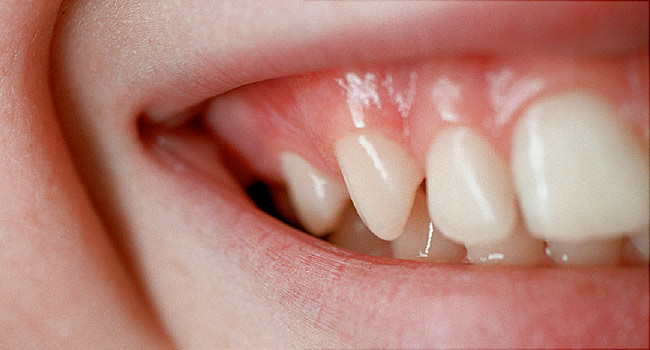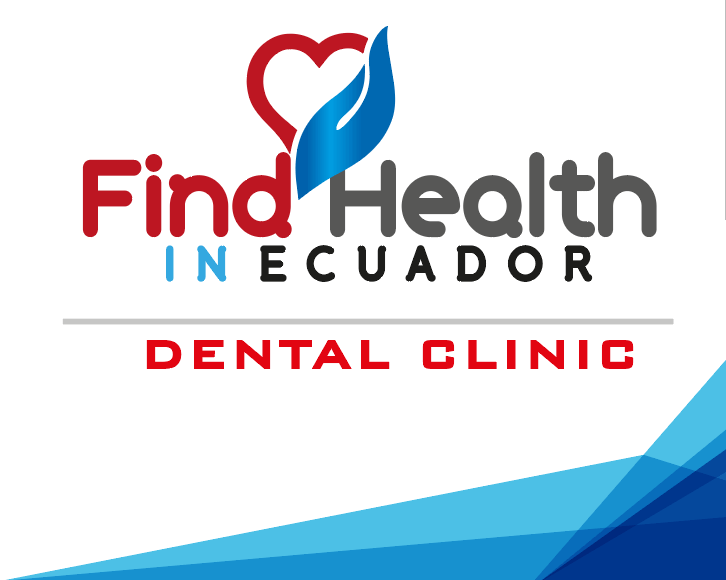How to Maintain Healthy Teeth and Gums
 We all know that practicing good oral hygiene habits is vital to maintaining the health of one’s teeth and gums. However, maintaining oral health is more important than simply preventing cavities and gum disease. Many studies have shown that a person’s overall health is much effected by their oral health. And so, actively maintaining one’s oral health is clearly a very important part of each person’s general as well as daily health care.
We all know that practicing good oral hygiene habits is vital to maintaining the health of one’s teeth and gums. However, maintaining oral health is more important than simply preventing cavities and gum disease. Many studies have shown that a person’s overall health is much effected by their oral health. And so, actively maintaining one’s oral health is clearly a very important part of each person’s general as well as daily health care.
This is because untreated gum disease or tooth decay can lead to pain, tooth loss, and a chipping away of self-confidence. In addition, these issues can in turn cause malnutrition, as eating and chewing becomes progressively more difficult, and can further result in speech problems, as well as other challenges at work, school, and in one’s personal life.
Proper dental care at home and at the dentist’s office can prevent these issues though. And so, as a basic examination of these most important matters, please note that the very best practices for oral hygiene include each of the following:
- Regular Brushing
- Fluoride Use
- Daily Flossing
- Routine Dentist Visits
- No Smoking
- Mouthwash Use
- Limiting Sugar and Starches
- Drinking Water
Thus, in this article we’ll discuss each of these good oral hygiene practices, as well as tips for children’s oral hygiene too.
1. Regular Brushing
Brushing teeth twice daily is the foundation of a good oral hygiene routine. Brushing teeth with the correct technique removes plaque and bacteria, keeping teeth clean and preventing decay, bad breath, and tooth discoloration.
The correct technique for tooth brushing is using a soft-bristled toothbrush in circular motions with light pressure on the front, back, and top of each tooth. It takes two or three minutes to properly brush the teeth completely.
Brushing too hard, using back-and-forth sawing motions, or using a hard-bristled toothbrush all may damage the gums and tooth enamel. This can lead to gum erosion, tooth sensitivity, or even cause permanent damage to the protective enamel.
The American Dental Association (ADA) recommends using soft-bristled toothbrushes, and they also endorse switching to a new brush after three months, or when the ends of the bristles appear frayed, whichever occurs first.
2. Fluoride Use
Fluoride is a form of a naturally-occurring element in the soil, known as fluorine. Fluoride is believed by most dental experts to help prevent cavities, and it’s commonly used as an active ingredient in toothpastes and mouthwashes.
Not all dental products contain fluoride, and some people don’t use it at all for any number of reasons. Evidence has suggested though that brushing and flossing without fluoride doesn’t prevent cavities as well as brushing and flossing with fluoride.
In the United States, many communities add fluoride to their municipal water supply. This practice has been recommended by the ADA, as well as the World Health Organization (WHO) and the Centers for Disease Control and Prevention (CDC). People anywhere (i.e. whether living in the US, Ecuador, etc.) can contact their local government to find out if their tap water has fluoride added.
Reverse osmosis water filters remove the fluoride from water, and well water may contain some fluoride, but it should be tested to determine the amounts. Bottled water often doesn’t contain fluoride unless it’s bottled from a municipal source.
3. Daily Flossing
Flossing is important because it removes food residue, plaque, and bacteria from in between the teeth, where brushing can’t reach. It helps prevent bad breath better than brushing alone, by getting the mouth cleaner than simply brushing by itself.
The ADA continues to recommend daily flossing, and the CDC also recommends that people floss their teeth frequently too.
The flossing technique recommended by dental health professionals is to gently push the floss between the teeth, up or down to the gum line, and then use up-and-down motions with the floss, making sure to hug the sides of each tooth while doing so. Snapping the floss up and down is less effective at removing plaque and can cause pain and bleeding at that.
4. Routine Dentist Visits
Regular dentist visits are necessary because dentists are able to diagnose oral health problems and treat them before they become more severe, painful, and difficult (and by that time more expensive) to treat.
In order to avoid major dental problems, experts recommend seeing a dentist for a checkup twice a year. During this visit, the dentist performs a thorough cleaning in order to remove hardened tartar and plaque that is more difficult to remove with standard brushing and flossing.
After a cleaning, the dentist checks for any visual indications of oral health problems, such as gum disease, cavities, and any indications of possible cancer or other issues. They may also take x-rays in order to check for cavities.
Recent studies have established that there are definite benefits to regular dental checkups for children and adolescents, who should always see a dentist every six months. Those same studies have also shown that favorably, adults whom adhere to good dental hygiene habits may not need to go to the dentist as often.
Rather than blindly following the herd (so to speak), people can simply ask their dentist how often they should come in for a checkup and cleaning. Depending on a person’s current oral health, as well as their general health, plus their history of dental problems, age, lifestyle, and other factors, more frequent or less often dental checkups may be recommended. Of course, whenever there is a change in one’s mouth and dentition, they should see their dentist.
5. No Smoking
Smoking is harmful for the body in many ways. It weakens the immune system, making healing more difficult, so injuries heal more slowly, including in the mouth. The CDC has identified smoking as leading to an increased risk for gum disease, and the ADA has stated that smokers may take longer to heal after any dental procedure.
Smoking also causes yellowing of teeth and tongue, affecting the mouth’s appearance. It can also exacerbate bad breath.
6. Mouthwash Use
While mouthwashes are not a substitute for brushing and flossing, according to some studies, they can be a beneficial addition to an oral hygiene routine. One study found that the antibacterial ingredient of chlorhexidine, which is included in some mouthwashes, does help to control gingivitis and plaque. Certain essential oils that are contained in some mouthwashes have also been proven effective at freshening breath and controlling bacteria.
It’s possible to find mouthwashes that may help reduce bad breath and other dental issues online. As always, people can consult their dentist, which can be helpful when adding a mouthwash to their dental routine, so that they can choose one that best fits their own needs.
7. Limiting Sugars and Starches
Numerous studies have confirmed that eating sugar leads to a higher incidence of cavities. Candies, soda, and desserts are obvious sources of sugar, but many other processed foods, even ones that appear healthy, such as yogurt, can contain added sugars.
The World Health Organization recommends limiting sugar intake to less than 10% of a person’s daily calories. A study has additionally concluded that keeping sugar intake to 5% or less reduces the risk of cavities and other dental issues further.
Starches break down into simple sugars, and the ADA has explained that starchy foods, like bread, pasta, crackers and chips, can also lead to tooth decay. The starches linger in the mouth, break down into sugars, and provide food for bacteria that then produce acid, which in turn leads to and/or accelerates tooth decay.
The ADA recommends limiting sugary and starchy foods and instead eating more fruits and vegetables that are rich in fiber, as well as dairy without added sugar.
8. Drinking Water
The biggest source of added sugars in the typical diet of people in the United States is sugar-sweetened beverages like soda, juice, sweetened teas, and other sugary drinks. These can easily lead to a higher risk of cavities, especially because many of these beverages are also acidic.
The ADA recommends drinking water or unsweetened tea, so as to replace sugary drinks throughout the day, while sugar-sweetened beverages should only be consumed at meals and in small amounts (if at all).
Tips for Children’s Dental Health
It’s important to maintain healthy oral hygiene from infancy all the way throughout childhood. Teaching children good dental hygiene from a young age will keep their teeth and gums healthy as they grow, plus help create good habits that last them into adulthood.
Primary teeth, or baby teeth as they’re often called, are just as important to keep healthy as permanent teeth. Baby teeth are important for eating and speaking and are placeholders for children’s’ permanent teeth, so they should be cared for as diligently as possible.
If a baby tooth is lost because of tooth decay, then other teeth can shift in the mouth, causing permanent teeth to grow incorrectly. Therefore, it’s important to start good dental care practices from infancy. Here are the correct techniques for caring for young children’s teeth.
Even before the teeth have started coming in, a baby’s gums can be gently cleaned with a warm, wet washcloth. This removes sugars from the gums, and it helps prepare the baby for the practice of cleaning their mouth later on.
Milk and juice contain sugars that can lead to tooth decay, so babies and toddlers shouldn’t have a bottle or sippy cup at night, so that sugars don’t remain on the teeth for a long period of time.
Sucking from bottles can be harmful, so as a baby nears their first birthday, they should be transitioned to sippy cups.
Juice and milk should be saved for meal times. Toddlers can have a sippy cup for water in between meals.
Once the toddler starts getting their teeth, they should be brushed twice daily with a soft baby toothbrush and a tiny bit of fluoride toothpaste about the size of a grain of rice.
Once children are 3 years old, they can use a pea-sized bit of toothpaste on their toothbrush. Caregivers should continue to brush the child’s teeth as they learn to do it themselves until the child can thoroughly clean all of their teeth without help, and they should continue to be monitored to ensure that they spit out toothpaste instead of swallowing it. Be sure to keep toothpaste dispensers out of reach of children (or at least reasonably restricted) at all times.
Parents and caregivers should avoid introducing bacteria from their own mouths to that of a child’s mouth, by not sharing eating utensils or putting a child’s pacifier or bottle in their own adult mouth for any reason.
According to the ADA, children’s dentist visits should begin either by their first birthday, or within six months of their first tooth growing in, whichever happens first.
Conclusion
Practicing good oral hygiene throughout life, from infancy through adulthood, helps keep teeth and gums healthy and promotes good health in everyone. Brushing twice a day, flossing daily, not smoking, limiting sugars and starches, drinking water instead of sugary drinks and visiting the dentist for routine checkups, all help avoid cavities, gum disease, and other dental as well as general health problems.






















